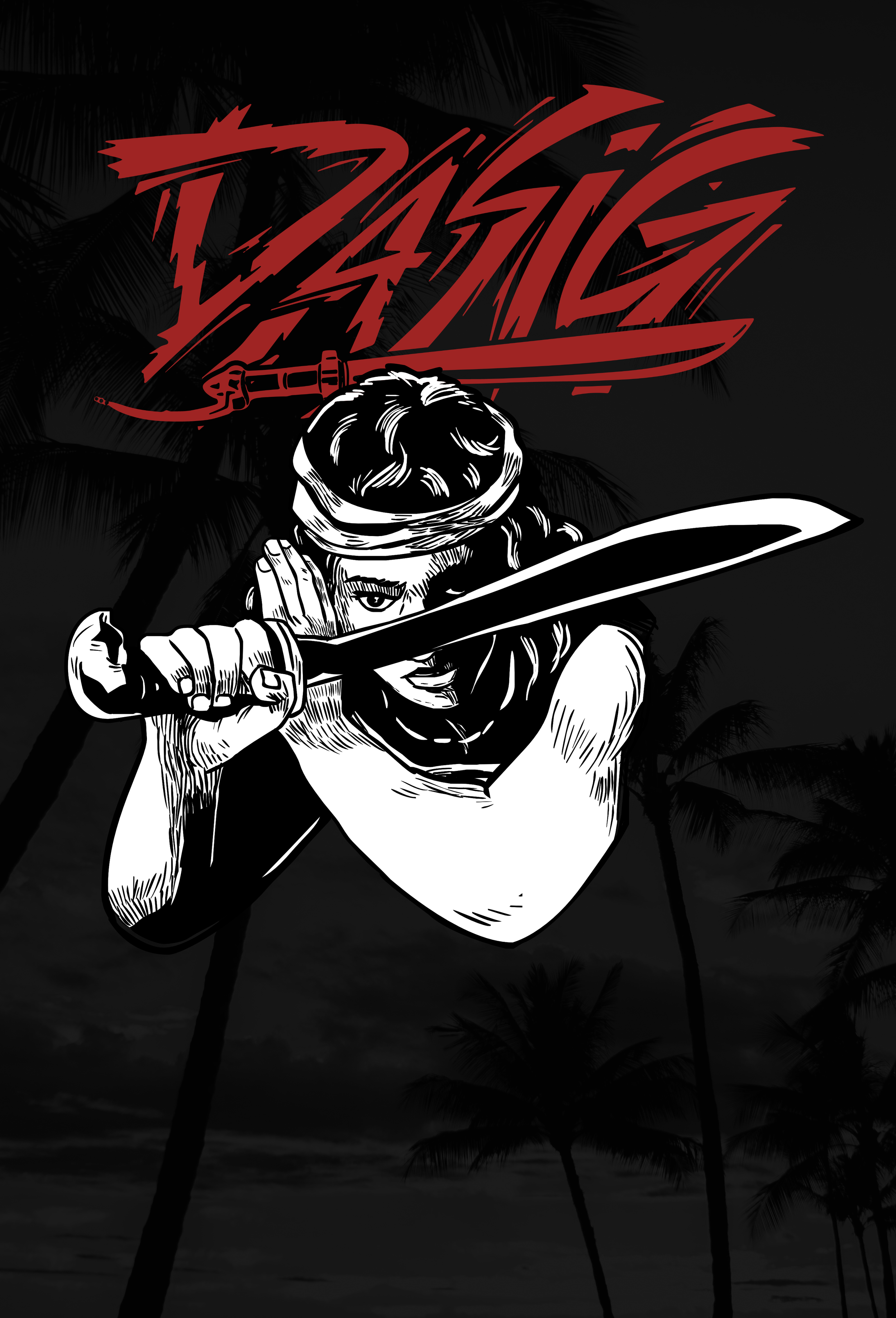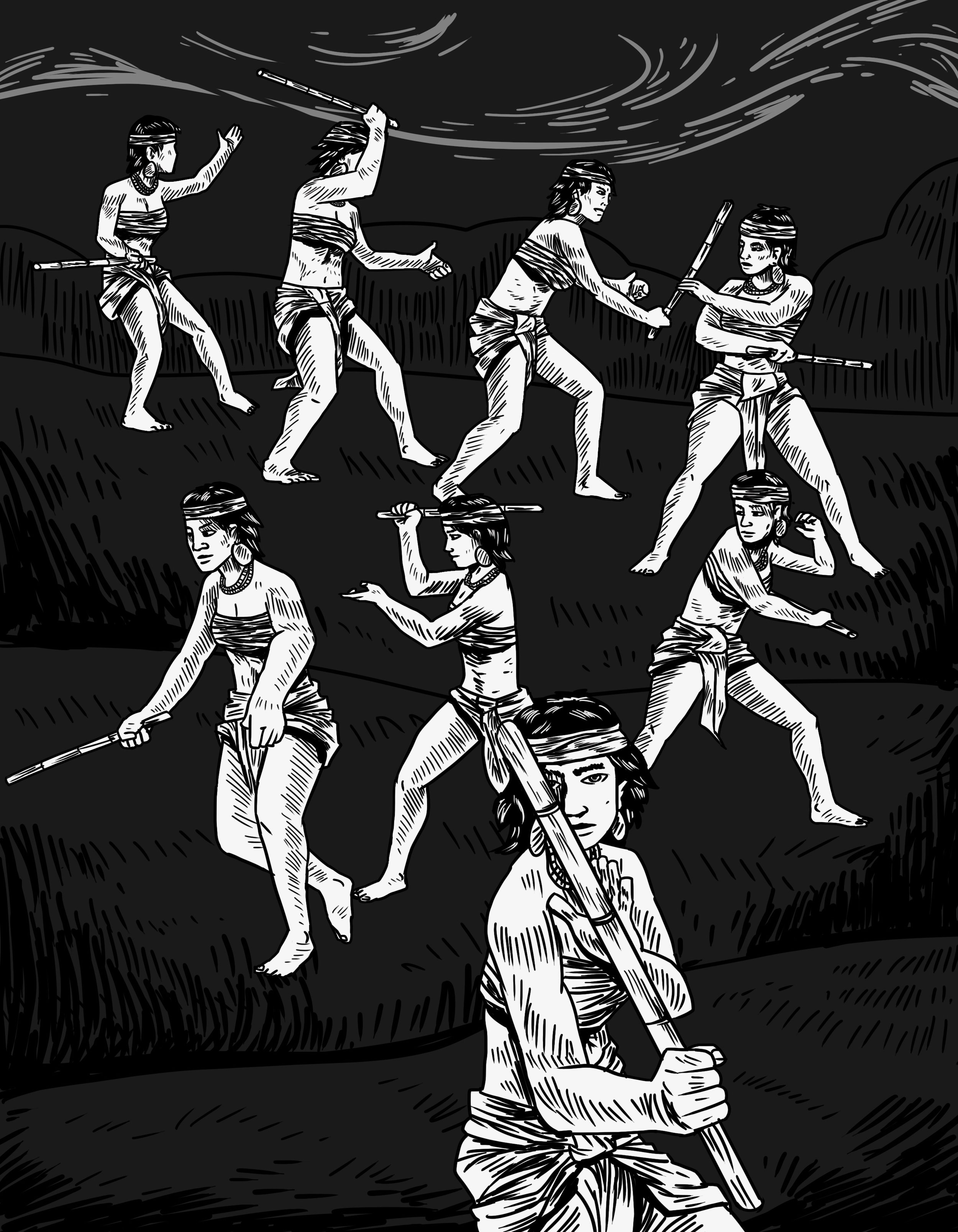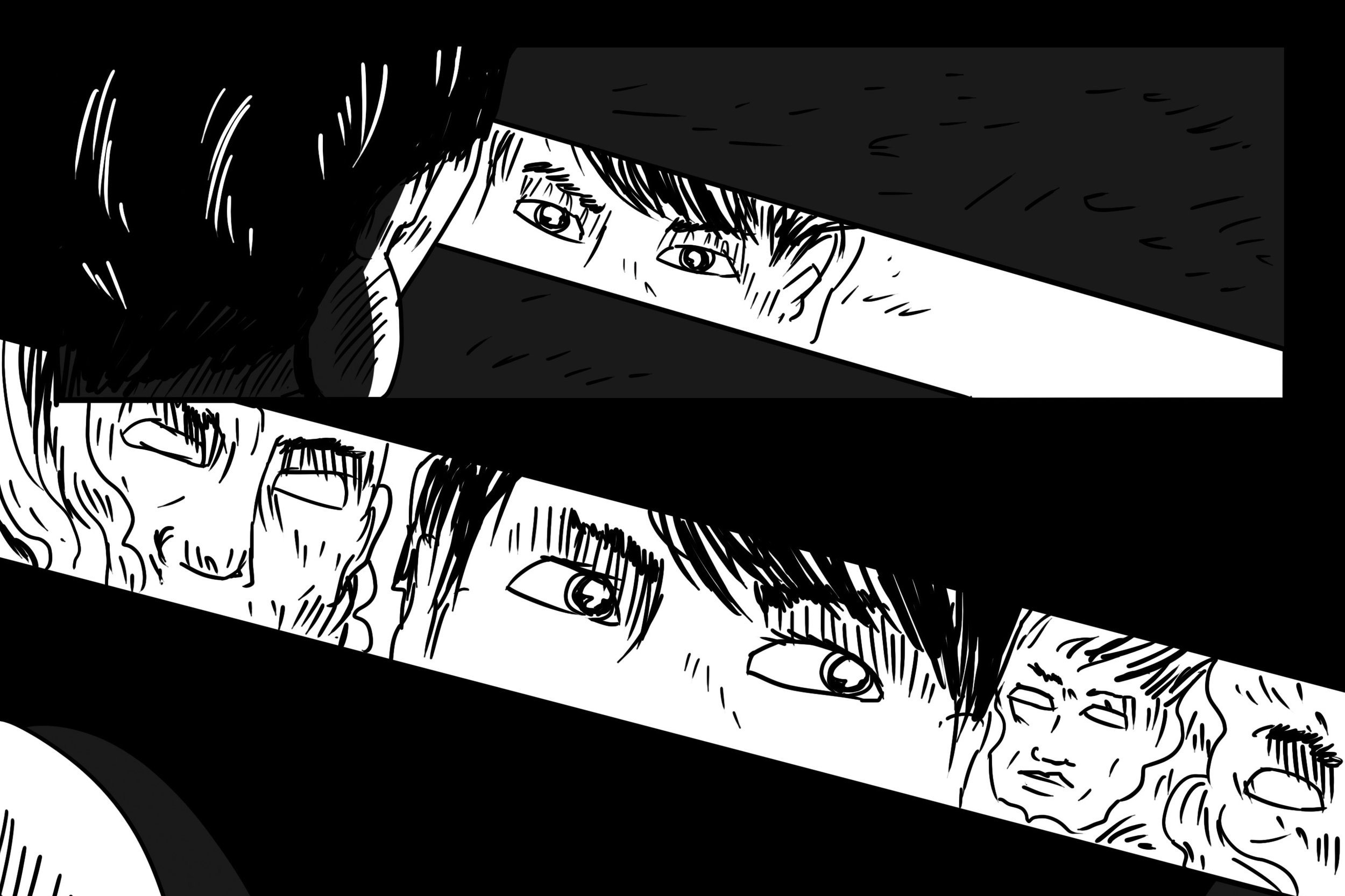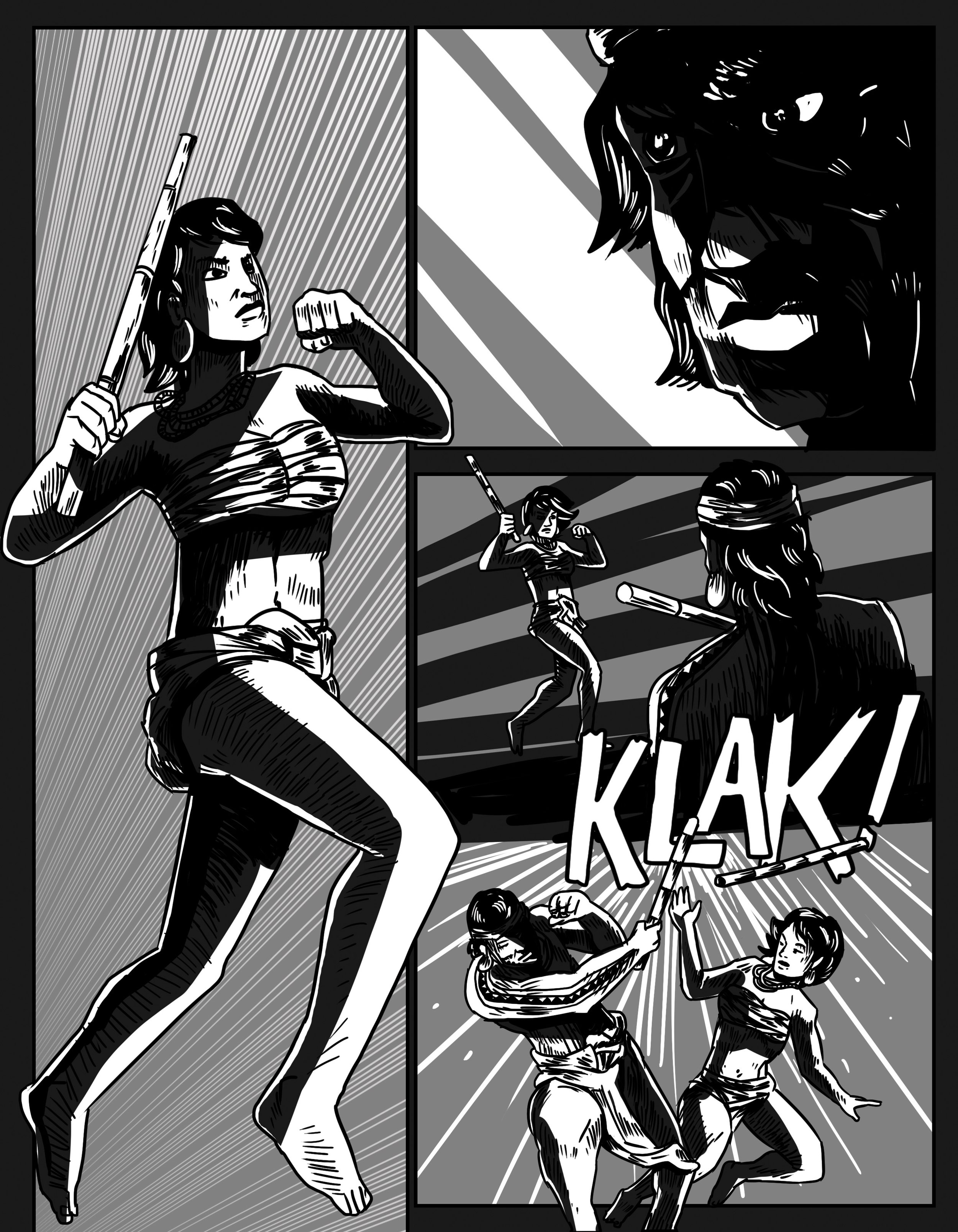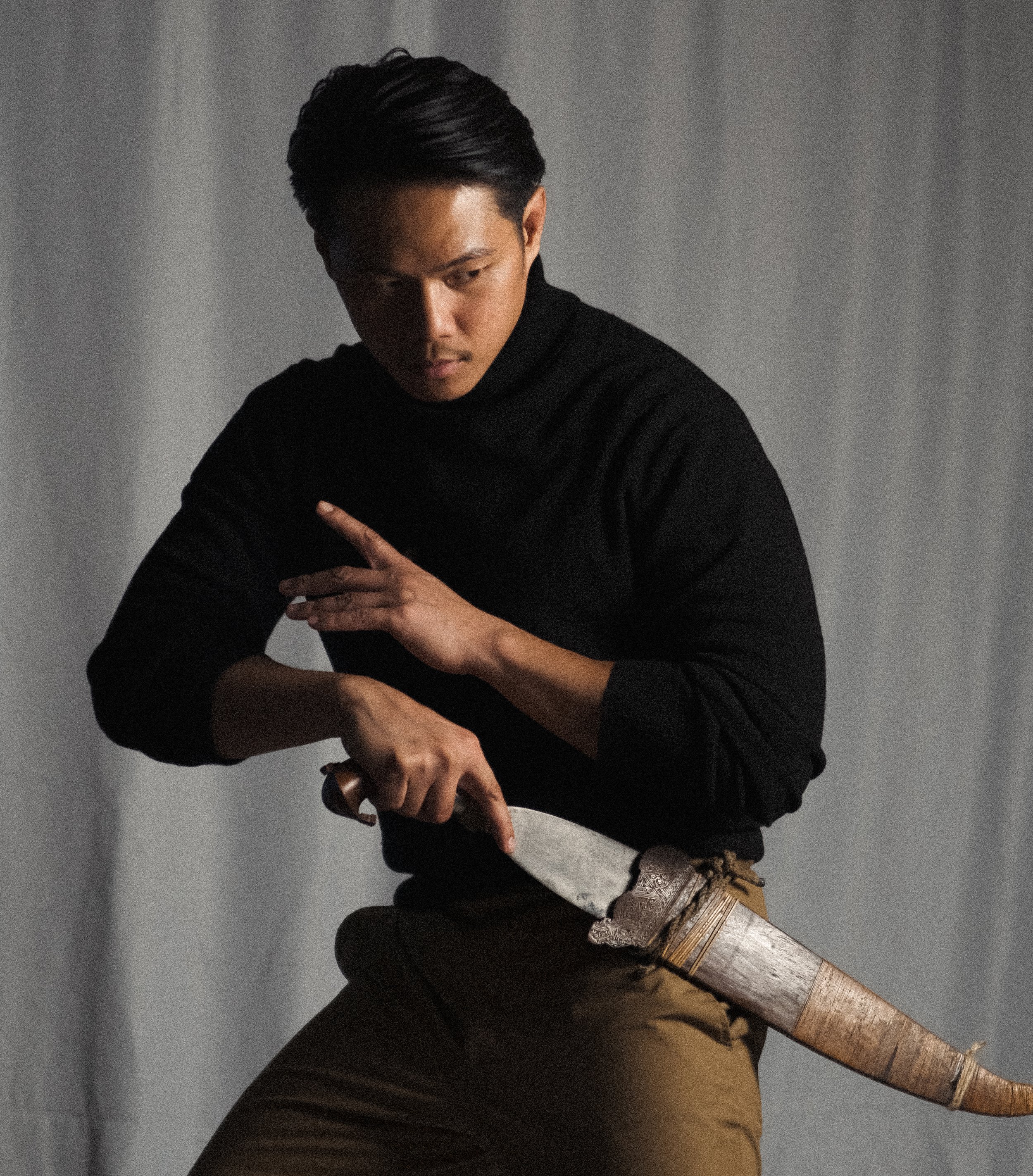New coming-of-age graphic novel centers a young warrior’s quest for purpose and self-discovery
Introducing Dasig, a new graphic novel and coming-of-age story about a young warrior-in-training struggling to find her purpose. Set in 1521 on an island in Cebu, this historical fiction takes readers on a journey through pre-colonial times, drawing from events and cultural practices throughout Philippine history.
Kristian Kabuay, an artist and educator of Pre-Philippine Scripts and writing systems, first shared the idea of Dasig during a 2021 podcast interview with his friend Jacob Ira Vijandre.
“We hadn’t seen each other in a while and were catching up. I was talking about this concept of making an animation,” Kabuay said. “There’s technology now. We know people, so maybe there’s a way where we can get this story bought by some big film company. As long as we pitched it correctly.”
With a general idea and ARC for the animation, Kabuay approached writer Lauren Lola and Bayani Art creatives Ponsi Alfonso and Joseph Aquilizan to help with a story treatment and 15-second video pitch.
The project underwent various transformations, including a shift from a male to a female protagonist.
“There wasn’t much of a thought process to it. I just thought, why not? Female warriors did exist then and now,” Lola said. “I hope readers will find something in common with Dasig, and regardless of what her gender expression is, I hope that she’s an inspiration for people of all kinds.”
In an inside joke among the creative team, Dasig became known as a “violent Disney princess” and, in Lola’s view, a warrior with the recklessness of Star Wars characters Anakin Skywalker but the mindfulness of Obi-Wan Kenobi.
“Dasig has all the workings of what could be a Disney princess story, just with a few little differences,” Lola said. “If you watch Disney princesses, they’re about what the character wants and how they are going to strive for it.” In contrast, Dasig actively pursues what she wants, but the reasons as to “why” escapes her.
Lola had a specific vision for how she wanted to portray Datu, the main male character in the story. She wrote Datu as a flawed human being, drawing inspiration from the men in her life.
“While Datu is very insightful and thoughtful, many men I know are so focused on one thing that they do not see the bigger picture, talk too much, they can be stubborn, have a bit of an ego, and don’t [always] see what’s in front of them.”
Instead of producing an animation, the Dasig team decided to create a 140-page graphic novel with funds they gained from running a successful Kickstarter campaign.
Lola drew inspiration from "Avatar: The Last Airbender" to inform the dialogue and philosophical content. Inspired by Samurai films by Kurosawa, Frank Miller, Lone Wolf & Cub, and Filipino filmmaker Lav Diaz, Dasig also weaves together various cultural practices, religions, and traditions of pre-colonial Philippines, including martial arts styles like Kali and Escrima.
“The martial arts world is very male-dominated, so to have a female martial artist in today’s time is still unusual. Given that perspective, it felt even more crucial to have this character be female. It can be empowering to see someone like her in this position,” Lola said.
In preparation for the book, Kabuay flew Jacob Ira to the San Francisco Bay Area to record and recreate Filipino martial arts moves in the park using a 360-degree camera. As the Filipino martial arts and weapons consultant, Ira helped decide which sandata, or weapons, to include in the graphic novel, such as the tenegre. He considered every detail, from the weapon’s handle, edge, and blade to each blade’s hilt, pummel, and shape.
According to Ira, the fighting arts were developed based on the terrain and environmental surroundings of inhabitants of pre-colonial Philippines, as well as weaponry such as spears, swords, shields, bows and arrows, poison darts, and daggers. The martial art featured in Dasig is Eskrima, which translates to fencing.
“One of the key scenarios in the graphic novel in which she was learning a basic principle of a technique came from the Filipino Martial Arts that I learned throughout my 30 years of training in Martial Arts,” Ira said.
“Eskrima is the fusion of our Indigenous Fighting Art and European Sword Fencing Art. It is truly a genius fusion that our Ancestors put together that has lasted for centuries and while Dasig’s time period is before colonization; sword fighting is truly determined by the characteristics of your weapon in hand and understanding the universal concept of line of attacks, distance, timing, and body positioning. This level of intelligence is what I wanted to highlight in this graphic novel,” he added.
Kabuay hopes Dasig will encourage readers to explore pre-colonial history, cultures, and languages. It is not only a story intended for a Filipino audience but one that appeals to readers within the broader Asian American community and anyone fond of graphic novels.
“I think it’s about time someone told a story about Indigenous Filipinos and how we fought,” Kabuay said. “If you strip everything away, the story is ultimately about someone trying to achieve something at its highest level.”

